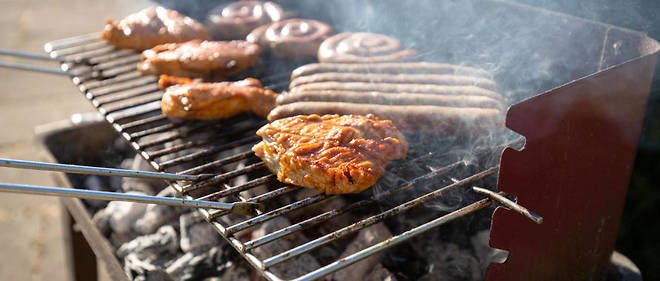Steam, grill, high temperature: which cooking to choose for your food?
INTERVIEW. How to cook meat without risk? And its vegetables to keep the vitamins? Florence Foucaut, dietician and nutritionist, delivers the keys to successful cooking.
If the choice of food is very important for health, the method of cooking is just as important. “Cooking is a step that should not be overlooked. It helps to preserve the nutritional qualities of food, ”explains Florence Foucaut, dietician nutritionist.
Cooking in water, the wrong idea
Cooking in water remains the preferred option for vegetables. However, it does not keep the maximum amount of vitamins. Indeed, immersed in too much water, vegetables lose their so-called water-soluble vitamins (those of groups B, C and H). Thus, these vitamins escape from the vegetables and drown in the cooking water. “More than 50% of vitamin C is lost during cooking. To compensate for the loss, it is better to divide your plate and eat half of cooked vegetables and the other of raw vegetables, ”advises Florence Foucaut.
Steam cooking allows you to cook without the food coming into direct contact with water. Thus, the losses of vitamins and nutrients are reduced. In addition, this cooking does not require the addition of any fat. To preserve the nutritional qualities, cooking in a wok is the most recommended. Over a high heat, food cooks quickly while keeping it crunchy. "It should be remembered that the best cooking is the one that is soft and short," recommends the nutritionist.
How to cook meat?
Cooking meat responds mainly to sanitary concepts. For hygienic reasons, white meat is eaten well cooked in order to kill all parasites with the heat. As Florence Foucaut advises, red meat can be savored from blue to “medium” to keep the maximum nutritional value. In this case, prefer cooking in a pan or in the oven in order to keep the minerals. And also take care of the origin of the food and the sanitary quality, in particular during conservation. For example, the cold chain should never be broken and meat should therefore be stored in a cool place.
If you choose the grill, be careful not to cook for too long or eat too dark meat. Even if the barbecue is tempting in fine weather and hot weather, it should not be overused. In fact, polycyclic aromatic hydrocarbons (PAHs) and heterocyclic amino acids (HCAs) are formed at very high temperatures on contact with flames. Toxic compounds which may be carcinogenic if swallowed. In order to limit the risk, do not eat the black parts, do not place the meat directly on the flame, and do not cook the meat on high heat. You can also use a cooking thermometer to check the temperature of the meat. As with everything, it's all about quantity. The risk is low when some grilling is done during the year.
Plancha or barbecue?
“For fish too, watch out for cooking. An overcooked fish loses its omega 3. It is better to cook it only back and forth or in foil ”, states the nutritionist. And then to add: “On the plancha, there is less risk than at the barbecue of overcooking meat or fish. The barbecue should remain a festive and occasional method of cooking. Finally, concerning fat, find the happy medium. The National Health Nutrition Program (PNNS) recommends turning to olive, nut or rapeseed oils.
Sources:

Comments
Post a Comment